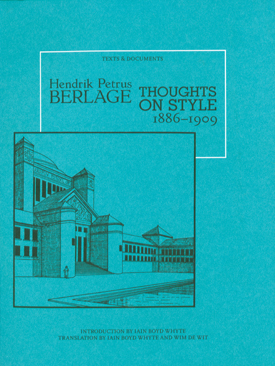Your Private Sky: R. Buckminster Fuller: The Art of Design Science (1999)
Filed under book | Tags: · architecture, design, design research, earth, engineering, invention, science, technology

“‘Bucky’ was one of the most revolutionary technological visionaries of this century. As an architect, engineer, entrepreneur, poet, he was a quintessentially American, self-made man. But he was also an outsider: a technologist with a poet’s imagination who already developed theories of environmental control in the thirties (“more with less”) and anticipated the globalization of our planet (“think global – act local”).
This visual reader documents and examines Fuller’s theories, ideas, designs, and projects. It also takes an analytical look at his ideology of technology as the panacea. With numerous illustrations, many published here for the first time, as well as texts by Fuller and the editors.
The publication presents Buckminster Fuller’s creations as a dazzling expression of this unconditionally optimistic technocrat whose vision of driverless Spaceship Earth led him to examine the principles of maximizing effects in the most diverse sectors of design and construction.”
Edited by Joachim Krausse and Claude Lichtenstein
Translated by Steven Lindberg and Julia Thorson
Publisher Lars Müller, Baden, 1999
ISBN 3907044886, 9783907044889
528 pages
via ExP
Review: John Martinson (Geographical Review 2001).
PDF (no OCR, 68 MB)
Comment (0)Hendrik Petrus Berlage: Thoughts on Style, 1886–1909 (1996)
Filed under book | Tags: · aesthetics, architecture, art history, modernism, style, theory

“Looking back to the period around 1910, Mies van der Rohe once commented that there was but a single architect then working on the European architectural scene, “Berlage was a lone giant.”
In parallel activities as both an architect and an architectural philosopher, H. P. Berlage created a series of buildings that witnessed the gestation and birth of architectural Modernism and a body of writings that probed in depth the problems and possibilities of this new style. But whereas his Stock Exchange in Amsterdam, with its rational mastery of materials and space, has long been celebrated for its seminal influence on the architecture of the new century, Berlage’s passionate writings on architecture, which exerted an equal influence on his contemporaries, have often been neglected.
In his wide-ranging critical introduction, Iain Boyd Whyte convincingly demonstrates that one corpus of work cannot be understood without taking into account the other: Berlage’s writings inform his architecture to the same extent that his buildings reflect his probing aesthetic deliberations. Berlage’s principal texts are here brought together in English translation for the first time. Collectively, they present to the English-language reader a new and vital chapter in the history of European modernism.”
Introduction by Iain Boyd Whyte
Translated by Iain Boyd Whyte and Wim de Wit
Publisher Getty Center for the History of Art and the Humanities, Santa Monica/CA, 1996
Texts & Documents series
ISBN 0892363339, 9780892363339
331 pages
Review: Suzanne Frank (J Arch Education 1997).
Comment (0)ARPA Journal, 4: Instruments of Service (2016)
Filed under journal | Tags: · architecture, city, design, design research, infrastructure, research, urbanism

ARPA Journal is a biannual digital publication that serves as a public forum for debate on applied research practices in architecture.
This issue questions the status of the instrument and of service. The articles explore spaces of encounter between “tangible and intangible creative work” in design practice, business models, new forms of representation and activism.
With contributions by Denise Scott Brown, Orit Halpern, Curt Gambetta, Alan Smart, Annabel Wharton, Francesca Hughes, Magdalena Miłosz, Filip, Wendy W Fok, J. Meejin Yoon and Eric Howeler, Michelle Fornabai, Ryan John King and Ekaterina Zavyalova, Lori Brown, Mustafa Faruki, Behnaz Farahi, Anab Jain, Jonathan Sun and Carlo Ratti, McLain Clutter, and Rafi Segal.
Guest Editor: Jennifer W. Leung
Based at Columbia University Graduate School of Architecture, Planning and Preservation, New York
Published May 2016
Open access

